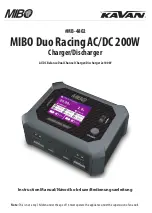
INSTALLATION, OPERATING AND TROUBLESHOOTING INSTRUCTIONS FOR MODEL E12
Page 11 of 20
PARALLELING PROCEDURE INSTRUCTIONS
HIGH FLOAT SWITCH IN FLOAT POSITION
1.
Chargers to be paralleled must be of the same voltage rating.
2.
Turn one (1) charger on. Charge the battery to full charge. Set the voltage control potentiometer so
the desired float voltage is maintained at a trickle charge rate.
3.
Apply the DC load. The charger should maintain the voltage constant while carrying the load
providing the load does not exceed the charger current rating.
4.
Turn No. 1 charger off and turn on No. 2 charger. Set the voltage control potentiometer to float
charger as per 2. Apply load as per 3.
5.
Turn both chargers on and apply load.
6.
Adjust the potentiometers of both units until the load is shared equally at the desired float voltage.
7.
After a short period of time, one unit may assume more of the load. Readjust the lower output
charger so the current is half the load.
8.
Once properly set, the charger should load share when the load is varied, from no load to full load.
9.
Since there is no interconnecting circuitry, and the units are completely isolated, both units regulate
by sensing buss voltage. At the no load trickle charge rate, one charger may assume all of the trickle
current rate, with the other charger at zero current. When heavier loads are applied, the lower
output unit will share the load.
10.
When two (2) chargers of the same rating are paralleled without a load sharing circuit, one unit may
carry a greater percentage of the load over a period of time.
IN EQUALIZE POSITION
1.
Follow the same procedure for setting the potentiometers as described in "float position".






































